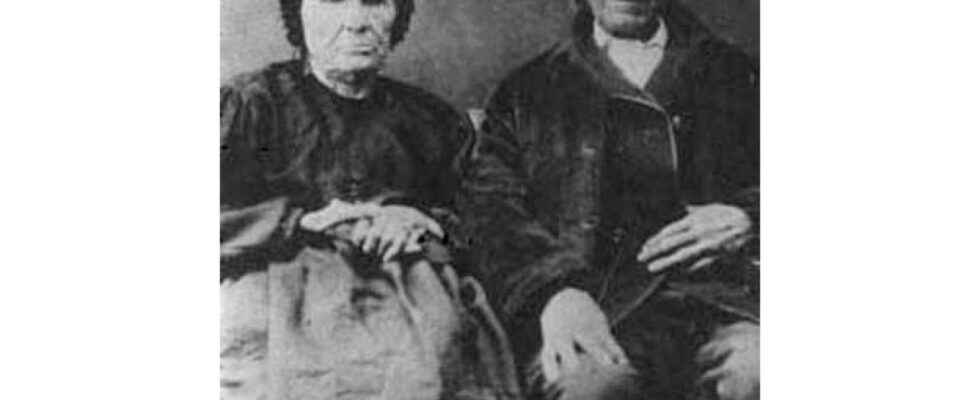June 6, 2022 marks the bicentenary of an incident which, normally, should have been forgotten after a few days and an improvised mass: one of the many fatal injuries suffered by anonymous travelers during their pelt intrigues in the Pays d’en high. Alexis Bidaguin, dit Saint-Martin, born in 1802 in Berthier, Lower Canada (today Berthierville, in Lanaudière), is one of the few travelers whose name has been retained, because of this tragic blunder which, against all logic, was not fatal, and became a historic event.
June 6, 1822, at the general store on Mackinac Island in Lake Huron, a strategic location for the fur trade since the late 17th centurye century, Saint-Martin received an accidental discharge from a rifle at point-blank range which punctured his abdomen. Dr. William Beaumont (Connecticut, 1785-1853), assistant surgeon to the US Army garrison stationed at Fort Mackinac, saved his life. Seeing the wound heal into a fistula giving direct access to the stomach through the abdominal wall, Beaumont made Saint-Martin his guinea pig and studied him for ten years. His experiences, published in 1833 in his book Experiments and Observations on the Gastric Juice, and the Physiology of Digestion, proved the chemical process of digestion through the acidity of gastric juices, and secured him international fame and posterity in medical annals.
For his part, 200 years after his accident and more than 140 after his death in 1880, Alexis Saint-Martin remains a secondary character in Beaumont’s life. His fabulous body did not bring him into the collective imagination alongside Louis Cyr, Jos Montferrand, Alexis le Trotteur or the Géant Beaupré; neither history nor literature has given him the honor he deserves. His presence in literature, constructed of clichés and inaccuracies, makes him a caricatural character.
A moral debt
In the United States, the fictionalized biographies of Beaumont speak of him in ignorance of the cause. In Quebec, a short story is loosely inspired by his story: Alexis Saint-Martin (1794) [sic]-1880). The man-guinea pig of doctor William Beaumont (Serge Gauthier, Charlevoix Editions, 2021). However, his life deserves to be told with greater attention to detail and truth, not only for the interest it arouses in itself, but because it bears witness to 19th-century French America.e century. Of course, his medical condition is fascinating. But the circumstances he went through because of her are probably more so.
During the ten years of their collaboration, Saint-Martin, suffering from the experiences and the estrangement of his family, fled Beaumont on several occasions to return to Berthier. However, he returned to the United States to join the surgeon – with his family in Prairie du Chien (Wisconsin), alone in Plattsburgh (NY) and in Washington (DC) -, under the influence of a moral debt of which the scientist knew how to take advantage, in a complex relationship, tinged with both submission and resistance.
Beaumont enlisted him in the US Army in 1832 to have him under his command, and made him sign a contract of engagement where he consented, by signing X des illiterates, to submit to the experiments on his person, a first in medical history. During these years, Beaumont paraded Saint-Martin through medical lecture halls in New England and, after his last flight in 1833, harassed him at Berthier by sending letters, emissaries from the American Fur Company and even his son Israel, to convince him to submit to new experiments, without success.
Chased by scientists
Beaumont’s death in 1853 did not release Saint-Martin from its condition of medical strangeness. A charlatan exposed him in turn in the United States and elsewhere in Canada in 1856 and 1857, and as mentioned in a few paragraphs in the British press, on the outskirts of London in the winter of 1858. This time, Saint-Martin was rather an attraction worthy of a freak show only a subject of physiological study, and yet, not spectacular enough to be hired by PT Barnum, briefly intrigued by his case.
Saint-Martin lived all his life in poverty, stigmatized by his injury and his alcoholism — he was even taken as a counter-example by the apostles of temperance — and was pushed, like countless compatriots, to s exiled with his family to New England to work in the textile mills. He has always been hunted by scientists, even after his death in Saint-Thomas de Joliette in 1880.
The famous Canadian doctor William Osler, under the pretext of the autopsy, wanted to steal his stomach to expose it to the museum of the American army in Washington. ” Do not come, will be killed”replied the family before burying the body eight feet underground (and under gravel) in an unmarked grave, to prevent the resurrectionists from disturbing the peace he could finally enjoy.
A complex and contradictory character, at the same time remarkably strong, enduring and courageous, and diminished by deep physical and moral suffering, Saint-Martin sheds light on our nineteenthe century through his journey. His involvement as a traveler in the commercial and geopolitical rivalries between powerful trading companies, his life in the Franco-Métis communities of Mackinac and Prairie du Chien where the border American, his voluntary servitude as Beaumont’s handyman, of which he was theservanthis misery in an overpopulated countryside of the Saint-Lawrence valley where families did not stay numerous for very long because of relentless infant mortality — let us underline here how much his wife, Marie Joly, supported him at all times and deserves equivalent recognition — his exodus to New England, his death in his community where his body and soul were honored, all of this gives his exceptional life profound collective resonances.
A life that must be told in all its complexity and richness, with humanity. Let’s remember Alexis Saint-Martin!
